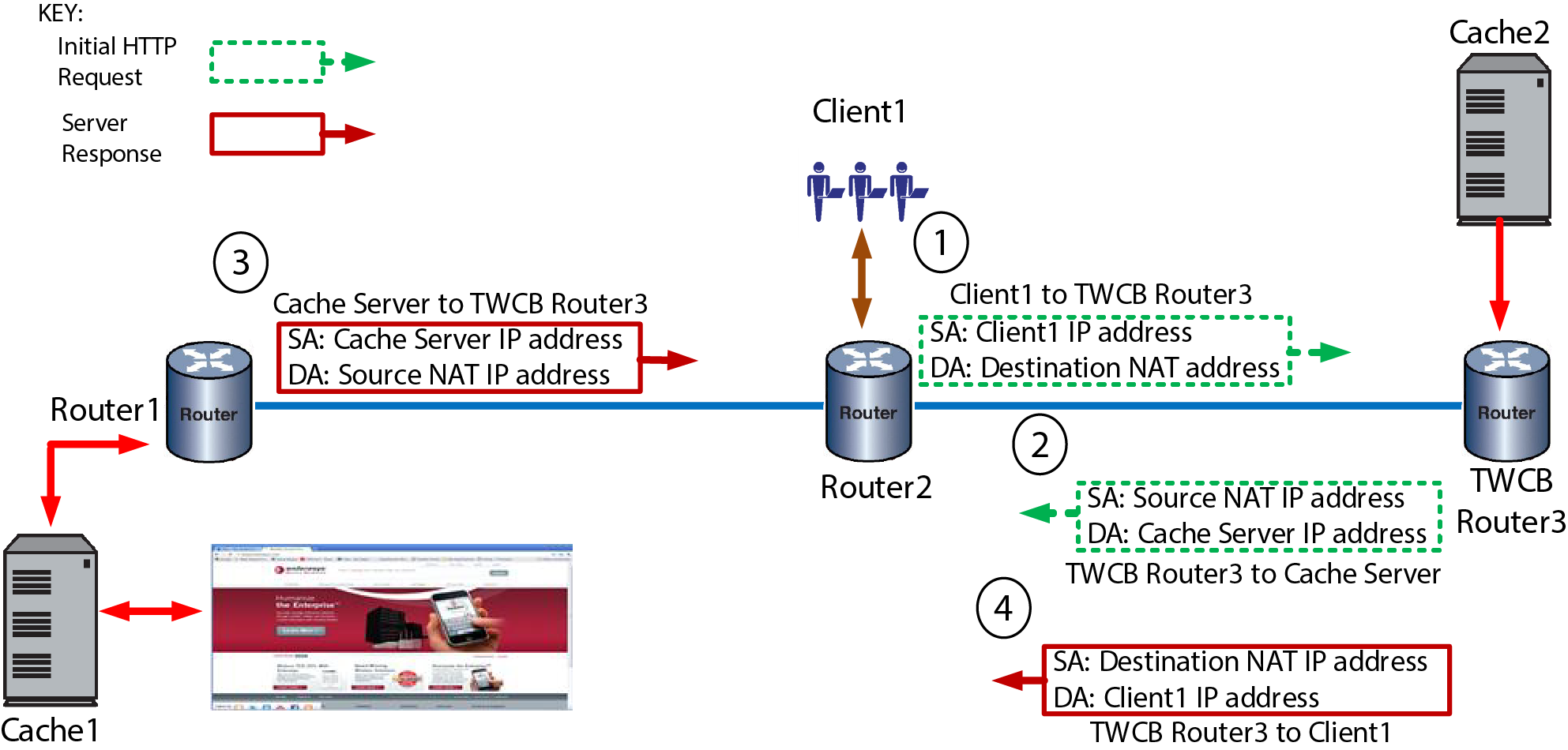Standard TWCB operation requires that a cache server have a route back to the client through the TWCB router. A second consideration is that client addresses are often unknown to the cache server. The TWCB source and destination NAT feature addresses these two issues. The configuration of TWCB source and destination NAT allows the client, TWCB router, and cache server to reside anywhere in the network and still provide for the forwarding of an HTTP request from the client to the web cache server. TWCB source and destination NAT also provides for the reverse forwarding from the web cache server to the client, assuring that the packet flow will pass through the TWCB router.
TWCB Configuration Overview and Predictor Round-Robin Overview illustrate examples of standard TWCB configurations. In both cases, clients and cache servers are directly connected to the TWCB router, assuring that the cache server both knows the address of the requesting client and has a route back to that client through the TWCB router.
TWCB Source and Destination NAT Overview illustrates a typical TWCB source and destination NAT configuration. Any requests directed to Cache1, can not assure that the reverse path will transit the TWCB router. Only Cache2, being directly connected to the TWCB router, can assure that the reverse path will transit the TWCB router. Therefore, this TWCB configuration requires source and destination NAT to account for any requests going to Cach1. The administrator configures TWCB Router3 for source and destination NAT by specifying both a Destination NAT address range and a Source NAT address range.


 Print
this page
Print
this page Email this topic
Email this topic Feedback
Feedback